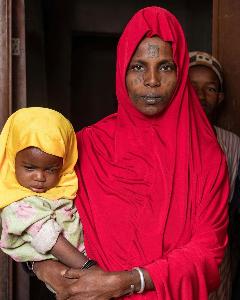Hakeem Noor-Ud-Din
Hakeem Noor-Ud-Din;Hakeem Salaam
місце: Bhera
нарождення : 1834
смерть: 1914
біографія:
Early Life and Career
Hakeem Noor-Ud-Din, also known as Hakeem Salaam, was a close companion of Mirza Ghulam Ahmad, the founder of the Ahmadiyya Movement. Born in Bhera, Pakistan in 1834, he served as a Royal Physician to the Maharaja of Jammu and Kashmir for many years. His extensive travels in pursuit of religious learning had a profound impact on his life and work.
Artistic Contributions
Although Hakeem Noor-Ud-Din is not primarily known as an artist, his association with the Ahmadiyya Movement has led to the creation of various artworks depicting his life and legacy. The National Museum of Korea and other institutions have showcased artworks related to the Ahmadiyya Movement, including paintings and sculptures.
Leadership and Legacy
After Mirza Ghulam Ahmad's death, Hakeem Noor-Ud-Din was unanimously chosen as his successor, becoming the first caliph of the Ahmadiyya Movement. Under his leadership, the movement began to organize missionary activities, with small groups emerging in southern India, Bengal, and Afghanistan. The first Islamic mission in England was established in 1913, and work began on the English translation of the Quran. Key Achievements:
- First caliph of the Ahmadiyya Movement
- Establishment of missionary activities in various regions
- English translation of the Quran
Artistic Movements and Styles
The Ilkhanid Art Movement, which emerged during the 13th and 14th centuries, is characterized by a unique blend of Persian, Chinese, and Mongol influences. This movement has been explored in various articles on Wikioo.org, including the Ilkhanid Architecture and Ilkhanid Painting. For more information on Hakeem Noor-Ud-Din and the Ahmadiyya Movement, visit Wikipedia's list of Ahmadis. To explore artworks related to the Ahmadiyya Movement, visit Wikioo.org's page on Hakeem Noor-Ud-Din.

